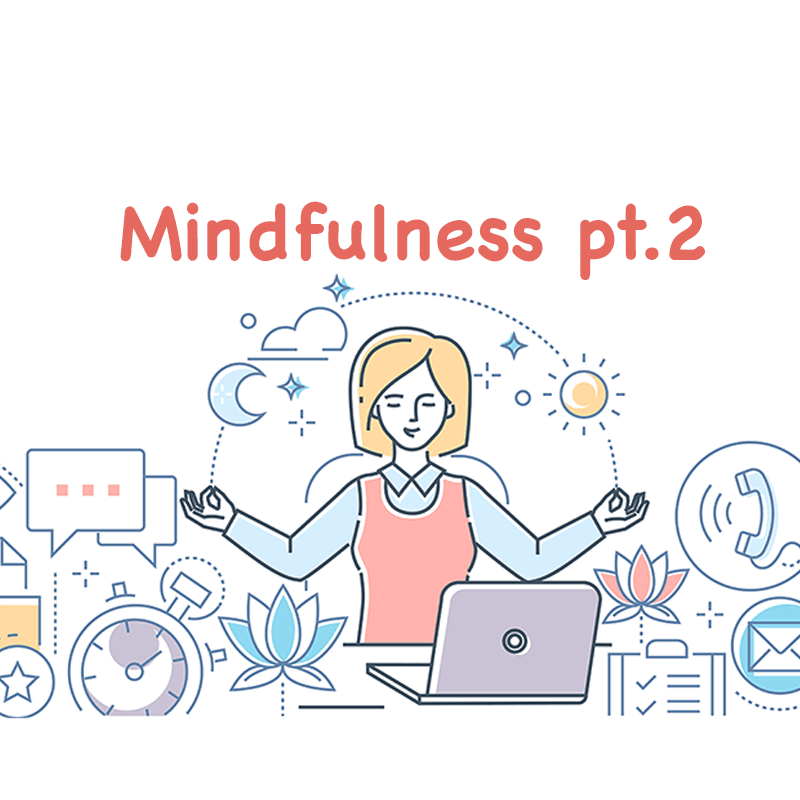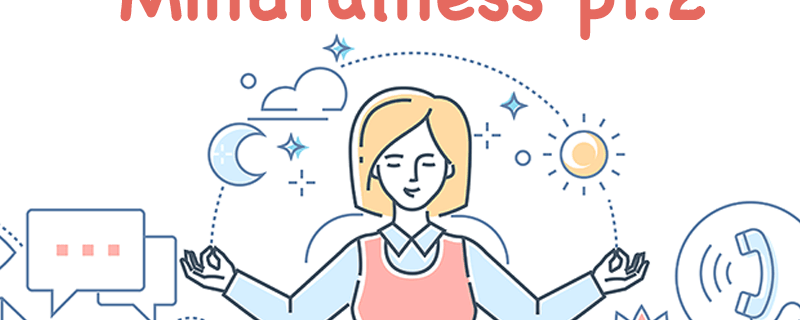Mindfulness, Meditation, And How To Practice Them: Part 2
In part one of this two-part article, I explained how hitting what could be described as a rock-bottom led me down the beautiful and challenging path of completely redesigning my habits, involving reconnecting with my deeper self and the present moment through practices of conscious awareness. Now I will describe more about the methods I learnt, why they work, and how you can incorporate them into your and your children’s lives today to improve overall well-being.

Awareness happens when we are paying attention to something. One key difference between humans and non-human animals, is that humans are more focused on the action of judging, whereas non-human animals are perceivers. Perceiving is simple, whereas judging is complicated. Through evolution, humans have developed an ego mind, manifesting as an inner narrative and stemming from the cerebral cortex in the brain. We tend to be analyzing a million things at once, and this attention we place on the story we create is preventing us from truly being present. When we are eating our breakfast, instead of placing our total awareness on the taste and texture of the food in our mouth, we are also focusing our physical and mental attention on what the News Anchor is saying on the tv, whether or not our kids did their homework properly last night, and what we would like to do this weekend. Living excessively through our analytical ego brain has two main adverse effects.
Not Being Fully Present Promotes Stress And Physical Exhaustion
Most of our thoughts are charged with emotions, and the most detrimental side effect is stress (our body’s survival response). While it is triggered by genuine life-or-death situations (E.G. we are being chased by a bear), it is also triggered by perceived survival situations (E.G. we are thinking about failing an exam and not getting into university). I’m not saying that fearing the latter is not reasonable, however, it is not happening right there in the present moment, and therefore we are creating a stress trigger in our imagination.
Thinking about stressful things flushes our body with “fight-or-flight” hormones (cortisol, adrenaline, and noradrenaline). Repercussions include muscular aches, IBS, lower immunity, high blood pressure, insomnia, and ultimately a shortening of our lifespan. Emotional reactions include irritability, concentration issues, depression, anxiety, and ultimately a far less enjoyable experience of being alive. Grounding ourselves into the present moment eliminates the unnecessary triggering of stress.
Not Being Fully Present Dampens Our Reality
The second impact of not being fully present is that we don’t fully experience the moment itself. Not experiencing the present fully causes the memory to not be imprinted in our brains effectively. When we are playing with our child whilst simultaneously checking our Iphone, we are not seeing (and thus won’t remember) the small yet crucial details, like the priceless micro-expressions of emotion on their face. Our memories will seem hazey, as if there is a frosted glass screen between us and the images we try to recall. Imagine this amplified over the years, and all the precious, irreplaceable moments lost.
The Magic Of Mindfulness
Mindfulness is a way of experiencing the world, where we are being completely aware of what’s happening only in the present moment. To achieve mindful awareness, we have to step back from our mind and step into our physical senses, so that we can just be in the experience. We must drop the narrative and let go of creating some sort of story. No opinions, no judgements, no comparisons, no flashbacks to the past, no fantasizing about the future. It sounds simple, but it can be a very powerful transition if you’ve spent a long time experiencing the world through your mind like I had. A good way to understand mindfulness is to consciously tune into your 5 senses. Notice what you can see, hear, smell, taste, and touch, but the key is to not label anything as being good or bad. It just is.
My suggestion is to stop multitasking and really focus on your sensory experience. Bring your awareness to the details of the food, the patterns in the tablecloth, the smell in the air. You can try mindful walking, where you walk outside and practice noticing all the different things through your five senses, one sense at a time. You’ll likely be shocked at how much richer (yet less emotionally charged) your experiences become.
The Magic Of Meditation
For a beginner, meditation is when we sit still, close our eyes, and bring our attention inwards (into our body, not our mind). Eventually we reach a deep state of clarity and relaxation where we no longer exist as a body in the world, but just as a stream of clear consciousness. I know this might sound a little strange. It did to me at first, and that’s why for beginners it’s best to not focus on any end goals, and just take it one step at a time. I remember the first time I connected with what I like to call my “higher self” whilst meditating. Our higher self still has thoughts, but they are only of pure wisdom – very different to that tangle of neurological junk that our lower self churns out. I can best describe it like this; our mind is like a multi-story car park (but the cars represent thoughts). The first floor contains many cars all fighting for space, chaotically honking at each other etc. There’s a lot of commotion happening down there, a lot of unconscious cussing going on! This is the first layer of our ego mind. As we relax deeper and create distance between ourselves and our ego mind, we go up a level in the car park. As each level increases, the amount of cars there become less and less. I have been practicing meditation for 3 years now, and still find it a challenge to remain in the higher levels for long periods of time without some honks from below drifting in. Some say our ego mind is like a monkey which needs to be trained to stay still, and meditation is how we train it.
There are many different ways to meditate, but I suggest starting sitting on the ground with a cushion under your tail bone (leaning against a wall if you tend to slouch a lot), closing your eyes, and focusing on your breath. Notice your stomach rising and falling. You may also say in your mind, “rising… falling” as you notice. Every time your mind wanders, mentally label it as “thinking” and bring your attention back to the breath. Set a timer for just 5 minutes at first, increasing by 1 minute every 3 days. This is the start of your meditation journey, and how you will build a solid habit. An important part is to not feel like getting distracted by thoughts is wrong or bad, and just bring yourself back to the present. We can actually learn a lot about ourselves by noticing what thoughts keep creeping into our mind (whilst not getting attached to them). Why not do a meditation challenge with your kids, so that you train your monkey minds, becoming calmer together as a family?
I hope that my opening up has left you feeling curious about developing these stress-busting, life-enrichening practices. If you’d like to encourage your kids to do the same, I will be running a weekend workshop here at Prepworks for 11 to 15 year olds, to teach them some seriously life-changing techniques (and many more not mentioned here) which aim to help them grow into resilient and healthy adults.”








